Fukushima One Year Later – First Impressions
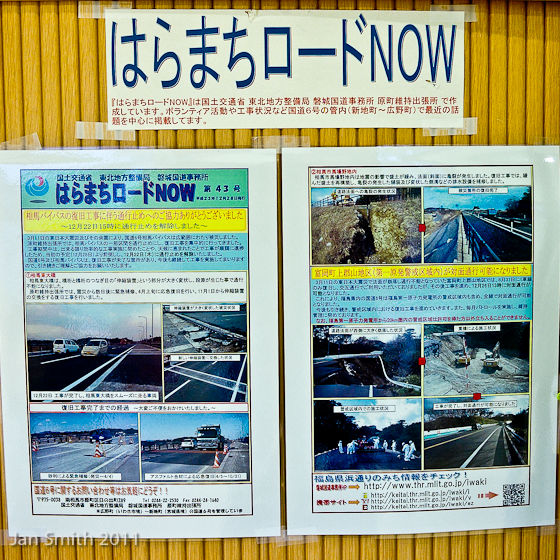
Last week, at the invitation of Peace Boat, and as part of my ongoing personal art project dealing with post-nuclear landscapes, I traveled to Fukushima and recorded my first pictures and impressions.
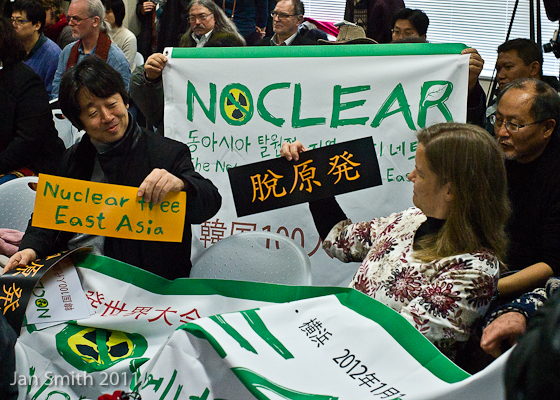
The tour was part of the activities organized for guest speakers in anticipation of the Nuclear Power Free World Conference held in Yokohama on January 14th and 15th. Fukushima City NPOs, local farmers, and residents in the affected area presented a full day of testimony. Assimilating their presentations was a group of over 40 international experts, ranging from artist activists to respected chiefs of nuclear laboratories and advisors on energy policy to European heads of state.
“We don’t believe what we are told,” is what I heard most. There was also open criticism regarding the lack of support provided by the government to the affected communities and displaced persons. The emotional strain these people are going through is thick and palpable. Many of the speakers we heard are working alone, having evacuated their families—either as a direct consequence of official orders, or as a precautionary measure.
 Radiation is invisible, and its effects accumulate over time. Without reliable data, fear and depression are setting in. Even if one assumes that dangerous thresholds have not been crossed, the lack of credible information to the contrary already conspires to transform stress and fear into psychosomatic symptoms comparable to radiation fatigue.
Radiation is invisible, and its effects accumulate over time. Without reliable data, fear and depression are setting in. Even if one assumes that dangerous thresholds have not been crossed, the lack of credible information to the contrary already conspires to transform stress and fear into psychosomatic symptoms comparable to radiation fatigue.
Fukushima One Year Later – Suicides
In Tokyo, residents off-handedly mention rising suicide rates as a consequence of the triple catastrophe. It almost seems like an urban myth, but Mr. Hasegawa Kenichi, a former cattle farmer and former Chief of Maeda District, Iitate Village brought the point to life. He showed the suicide note left by a friend and former resident. With his cattle condemned and his livelihood destroyed, the man killed himself, holding the nuclear accident directly responsible. His last words were scribbled in chalk, on a wooden desk.
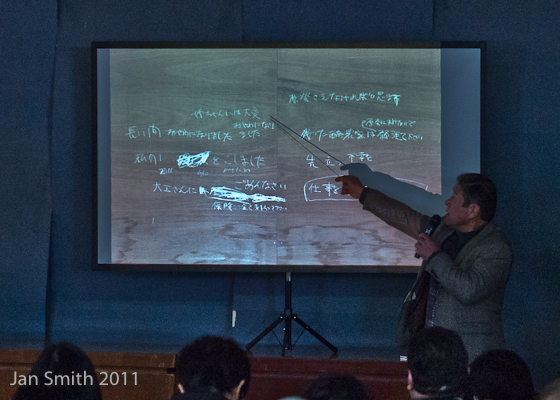
The presentation was given in the Higashi Community Centre, next to temporary housing facilities. Outside, the former organic farmers and cattle owners live next to a derelict apple orchard. Plants have the uncanny ability to absorb officially “tolerable” levels of Cesium in the soil, only to concentrate it into harmful levels in their fruit.
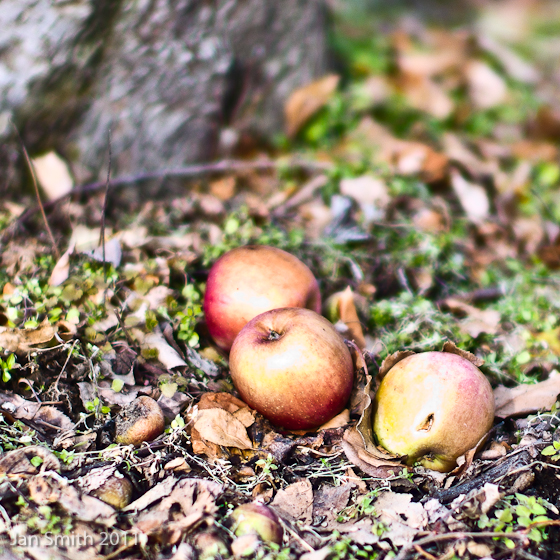
Fukushima One Year Later – Evacuation Communities
Although modest, the temporary houses appear well built; they have plumbing and heating. Compared to many low-income homes I’ve seen in Africa and Latin America they are luxurious. It speaks well to what capacity the Japanese government and society have, even in face of enormous hardship.
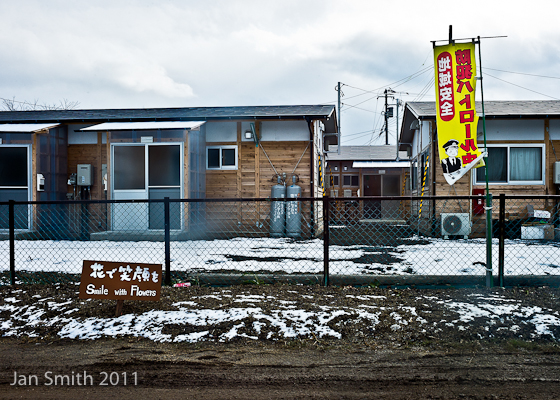
The residents put up a good effort too. Personal knick-knacks adorn porches, and Christmas trees decorate living rooms. A small sign in the western corner of the compound reads, “Smile with Flowers”. English translations from Japanese are often comical, but without any evidence of color, other than a red and yellow banner giving safety instructions, I wondered if something was painfully lost in translation.
Fukushima One Year Later – Firemen
Of all the testimony I heard, the one that touched me the most was that of a local fireman. Before he even spoke, I spotted him in the back of the room. Although stoic, as only the Japanese can be, the toll of trauma, separation from family, and fear, was visible in his face.
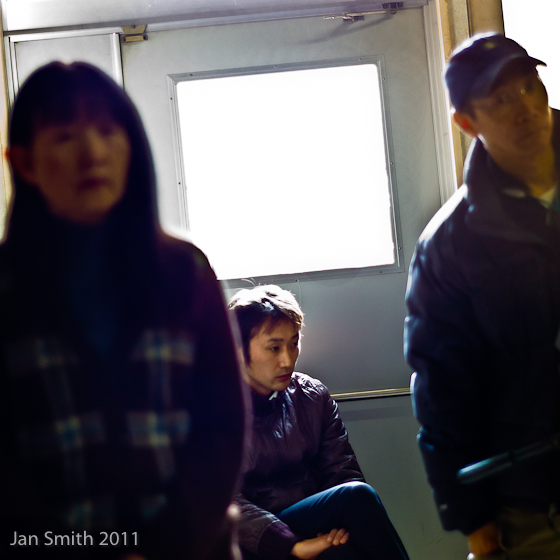
As with Chernobyl, firemen were the first to respond. Cognizant of the danger from potential radiation leaks, they never ceased their rescue efforts. Pre-disaster planning never anticipated the level of response required, and designated only one fire brigade for the nuclear plants. All other first responders made due with improvised radiation suits made of raincoats. Not surprisingly, some now register internal radiation contamination.
The convoy of buses left the compound and passed the statue of a young girl. She is waking toward Fukushima City, coming from the hills, and is reading a book. A more appropriate tool would be a Geiger counter. Measurements taken by residents indicate the highest levels of radioactivity are in the mountains. The snow capped peaks protected Fukushima City from the full effect of the radioactive plumes emitted by the nuclear plant.
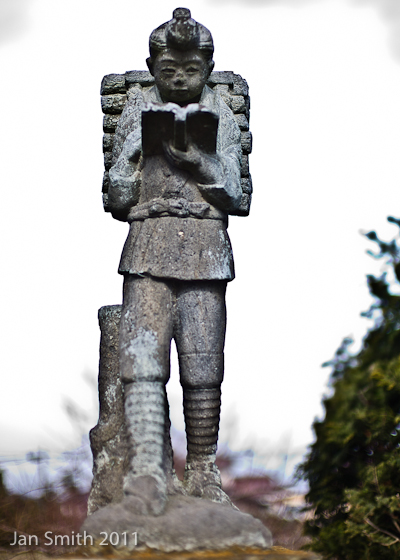
Most of Fukushima’s radioactive spume blew out to sea, but a considerable portion also landed inland, and although the government reports averages as being lower than Chernobyl, there is little doubt that significant “hotspots” exist on land. Where are they?
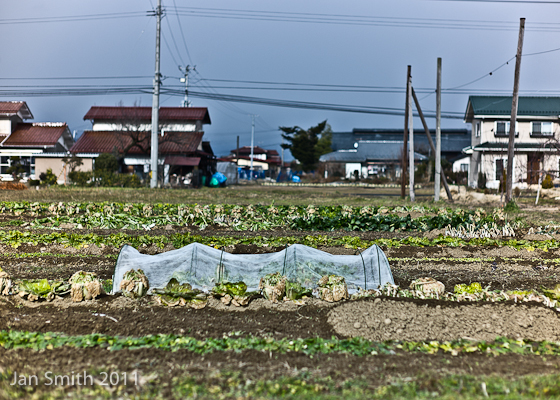
Fukushima One Year Later – Cleaning Up
Beyond the first spine of mountains, our Geiger counters, inside and outside the bus, confirmed rising radiation levels. In the evacuated village if Iitate, they reached some of the highest levels recorded by the group. In the abandoned town, private contractors dressed in white protective suits scrubbed houses, and snow monkeys scavenged for roots in the unattended fields. I recalled Chernobyl, and how quickly nature (mutated or not) returns once humanity leaves.
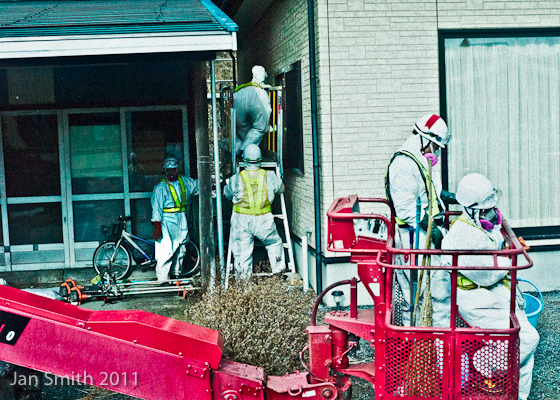
What the exact extent of the leakage is, remains unknown. Estimates put out by the Austrian weather service, and re-quoted by the Nuclear Monitor, state that the levels of Cesium 137 released by Fukushima could be as high as 50 percent of those caused by Chernobyl, and Iodine 131 levels as high as 20 percent. A common quote in international media rates Fukushima as ten percent as severe as Chernobyl.
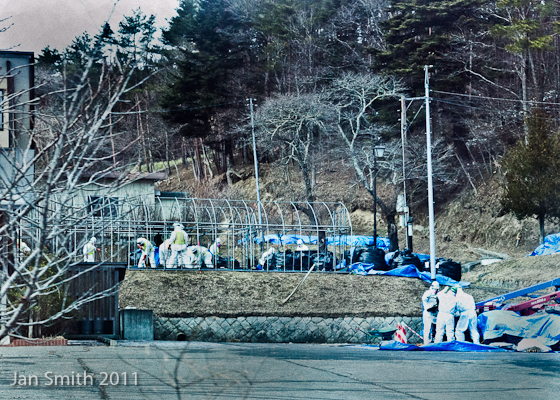
The civil associations presenting testimony report that no official maps are provided by the government, even in areas that are still inhabited. In defense of the authorities, this would be a daunting task, even without the lingering effects of earthquake and tsunami reconstruction. Various civil groups are taking these efforts into their own hands.
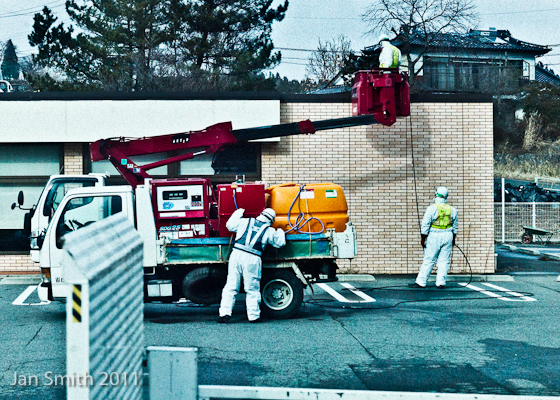
Fukushima One Year Later – Hotspots and Contaminated Soil
Detractors point to potential flaws in equipment and methodology eschewing citizens’ data efforts. The overwhelming data, whether properly gathered or not, is directionally accurate. Radiation levels are higher, and the sheer weight of this empirical methodology points to an average increase of 200 percent in the natural background radiation existent prior to the accident.
As a stand-alone figure, such an increase is alarming, but in the context of what organisms can absorb, it is within tolerable thresholds. Such reasoning however detracts from the fact that there shouldn’t have been a rise in radiation levels to begin with. Furthermore, using the law of averages, it is very likely some data points are much higher and balance out with the low ones.
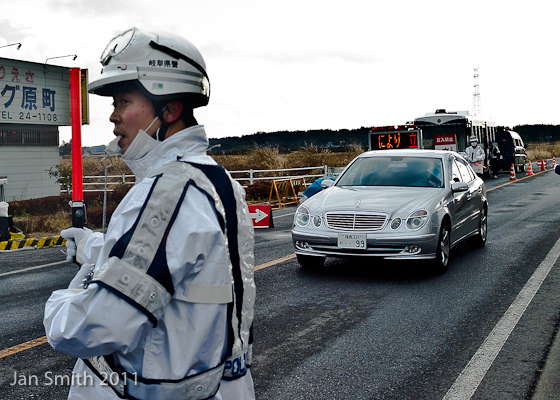
The measurements taken by citizens’ and farmers’ groups indicate many of the hotspots are in the mountains. Government measuring efforts are reported by NPOs to be less in the wilderness than in urban areas. It is in the hills however, that radioactive wind and rain were raked. As precipitation cycles evolve throughout the year, it is likely the radiation in higher zones will work its way into the lower altitudes, and more worrisome, into the water table. Initial evidence of this is supported by readings taken in the gutters and rain pipes measured by NPOs we met in the half-evacuated city of Minamisoma.
As with plants and their fruits, fluvial systems can increase radiation deposits where they let out. A real-estate agent in Tokyo I spoke with later in the week, indicated his company is trying to map the terrain that will be most affected in two years, in an effort to anticipate real-estate trends. Ethical or not, this is a cunning use of data, but it fails to put the issue in its proper context of time. Radiation does not work in cycles relevant to our lifetime. It dictates time in spans of isotopic half-lives.
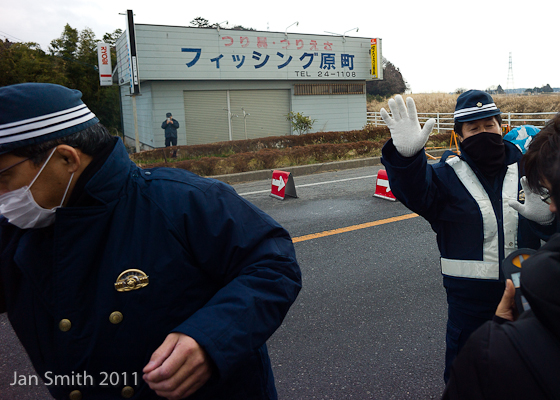
The issue of time and physical scale often seemed beyond the grasp of the survivors I heard speak. Famers are worried about how much to plant next season. Homeowners in the affected zone scrub their homes, and hire decontamination crews hoping to make them clean. Villagers tell how they dispose of contaminated earth from their home in parks or empty lots–inadvertently creating new hotspots. Such acts are courageous but as useful as changing clothes is a dust storm.
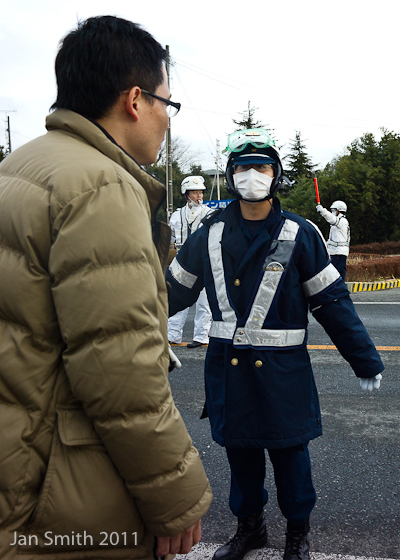
The fact that citizens are attempting cleanup efforts on their own speaks volumes to the shortcomings in government fact giving. At times it is hard to not succumb to the most extreme of cynical voices, and believe in an enormous conspiracy rather than an accumulation of individual and social incapacities.
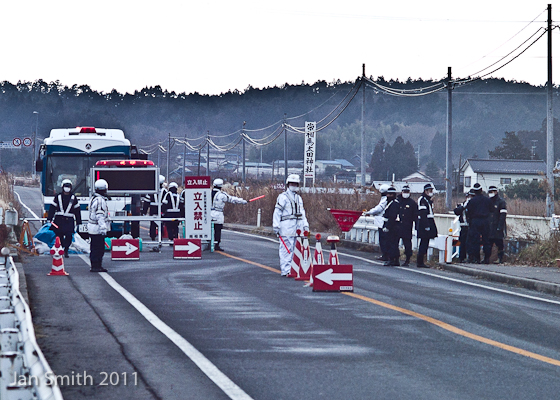
Fukushima One Year Later – Minamisoma Restricted Zone
At the road-block into the Restricted Zone, the 20km perimeter around the damaged plant, where no unauthorized entry is allowed, trucks full of earth were going in. We were told it was contaminated soil. If true, that would point to a de facto admission that certain areas near the reactor are considered permanently condemned and therefore prime areas for dumping radioactive soil. This would in turn imply that evacuees will not return any time soon, and this has not been clearly communicated by the government to former residents.
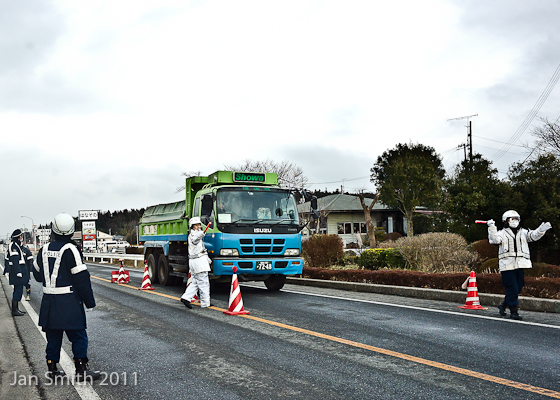
The importation of soil to the Restricted Zone also suggests there are hotspots outside the zone that are being dealt with, but not necessarily identified to the public. How else would the soil be deemed “exportable”? The nuances and implications of this seem lost in more than just translation.
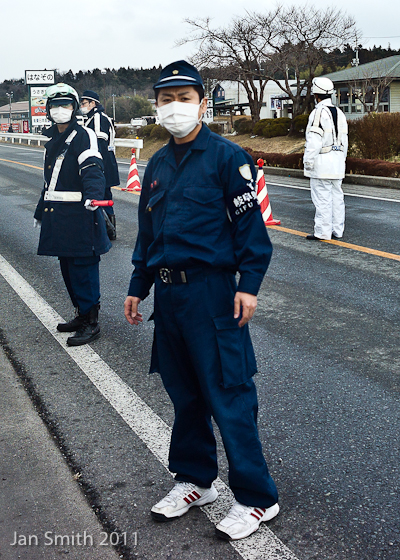
I wondered what type of flowers would grow in that soil, but I didn’t smile.
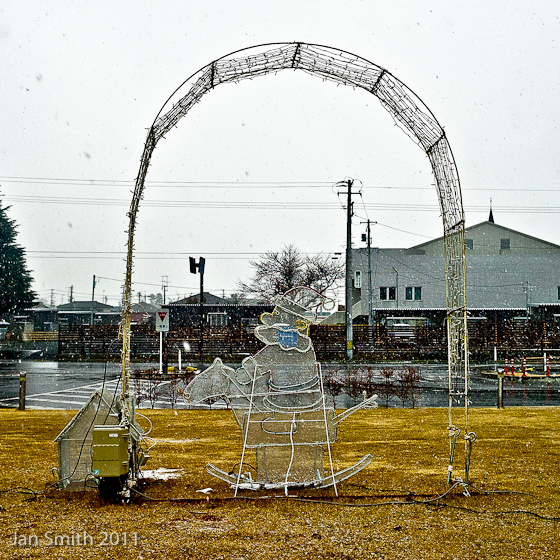

Excellent reporting about this very complex situation, Jan. Thank you so much for participating in the Fukushima program and the Global Conference for a Nuclear Power Free World in Yokohama this year.
Rose, on the contrary, thank you personally, and Peace Boat for all your support.
This is amazing.
I also wonder what flower would grow in that soil and I too am not smiling.
Thank you Polly.
Bravo Jan !!! Très intéressant et assez effrayant . J’aime ce genre de photo reportage qui témoigne et informe là ou l’info ne va pas toujours…
Merci Lucie.
Greetings Jan
Thank you for sharing your amazing photos and powerful commentary. I am still having a hard time writing about what I saw. It was truly a life changing and heart wrenching experience visiting Fukushima and meeting the people impacted by bad energy choices. I’ve created a simple Tumblr Blog to share all of our stories and commentaries (http://nuclearfreenow2012.tumblr.com/). The blog has video footage from the Global Conference for a Nuclear Power Free World and I have been posting our colleagues material as well. Keep on doing your the amazing work. I look forward to collaborating for the betterment of all in the coming months and years. Be well.
Kris
Thanks Kris, I’ll be sure to visit the site. I noticed you were filming and saw some of the talks I missed, so it’s great to know. We’ll be in touch.
Interesting read, very very sad to see what is happening, what is worse is how the media and government cover up how bad this disaster is!
Thanks Robert. Yes, the lack of information flowing out is very worrisome.